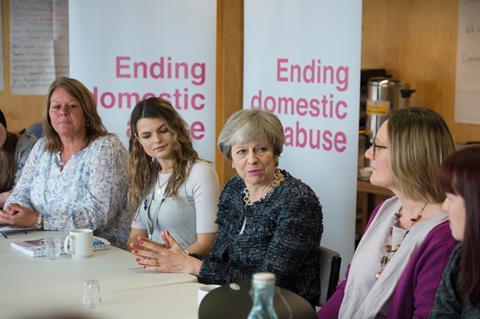While the legal framework laid down by the Children Act 1989 remains robust, multiple operational failings in the justice system are letting children down. Rachel Rothwell reports
The low down
In 1989 the Children Act brought a new coherence to the law relating to children, placing the child at the heart of decision-making. But while the act and its updates are still good law, there are questions to be asked over whether children are being failed in the way that judges are applying it. That is especially relevant in cases involving domestic abuse. The chronic lack of resources in the family justice system and beyond is another failing. Difficulties were highlighted in the seminal ‘Harm Report’ of 2020, which made a number of recommendations for change. While most have yet to be acted upon, one success has been the piloting of two ‘Pathfinder’ courts that take a more investigative, multi-agency approach to solving problems.
It is now 34 years since the Children Act 1989 revolutionised the law relating to children: it was a broad, sweeping act that provides a coherent framework for child protection and wellbeing. As statutes go, it has aged well.
Tony Roe, partner at Dexter Montague in Reading, explains: ‘I’m old enough to remember proceedings before the Children Act, and that was an absolute nightmare. It was a very bitty approach, and the Children Act really consolidated things. An awful lot of thought went into it – Baroness Hale was one of the driving forces behind getting it through. It’s been modified from time to time which has meant that it has kept pace; so it’s aged a lot better than some other statutes, and probably has a lot less wrong with it.’
Lauren Hall, partner at Osbornes Law in London, concurs: ‘The Children Act seems to be standing the test of time and the child’s voice is paramount, with children at the centre of all decision-making – which was the intention of the act. But unfortunately, rather than the Children Act itself being a problem, it’s the mechanics of the court system that let the act down. Over the last few years, it’s been absolute chaos.’
Like many family lawyers, Hall is frustrated by the lack of certainty in the system, with hearings constantly dropped. ‘In children proceedings, the state of the court system, and the horrendous delays [in private law hearings] worry me. One of the principles in the Children Act was “no delay”. Well, on the ground, you’ve got children being embroiled in parental conflicts for far, far too long.
‘There are many good judges and they do their very best, but they are faced with an enormous court list, probably two-thirds of which will include a litigant in person because of legal aid cuts.’
Jenny Beck, co-founder of Beck Fitzgerald in London, says: ‘There are practical and operational difficulties going on that make our court system look a bit like the wild west – for example, inconsistent application of the rules leading to a bit of a postcode lottery, and listing nightmares. Cases are pulled out of lists at short notice, which is deeply distressing for parents who have prepared themselves psychologically. It really compounds the problem of an adversarial system by making everyone more frustrated.
‘You have got children waiting for many, many months without decisions being made about their lives, which impacts them hugely emotionally, with a knock-on effect on their development. So the practical problems are quite big at the moment, and justice isn’t been done on an operational level.’
Beck adds: ‘The more worrying problems are the way we’re treating harm within Children Act proceedings; effectively, the way we’re dealing with domestic abuse. That’s a much bigger problem. We still don’t have trauma-informed courts, and many of the measures to protect victims within the court process are not working as well as they should because of resource constraints.
‘One area that is going very wrong is this new wave of so called “parental alienation” allegations, often used in a way which effectively silences allegations of abuse before they are made. Parents who may have experienced abuse are concerned at not being able to prove that abuse. They fear that they will be accused of so-called alienation, and a child reluctant to go to see an abusive parent may be forced to do so against their will.’
This issue was highlighted in the Domestic Abuse Commissioner’s latest report in July. The commissioner was ‘particularly concerned’ about the ‘significant increase’ in the way such allegations are leading to ‘unsafe contact’ between children and potentially abusive parents.
‘Parental alienation’ refers to the concept that a child might become ‘alienated’ from one parent, and therefore not want to see them, because the other parent has engaged in ‘alienating behaviours’ – for example, constantly criticising the other parent or creating the impression that they do not love the child. Where the resident parent has been found to have alienated a child against the non-resident parent, this can lead to the court ordering that the child should be sent to live with the non-resident parent.
‘Pathfinder’ courts pilot
One very successful initiative stemming from the recommendations of experts in the 2020 Harm Report has been the piloting of two ‘Pathfinder’ courts, in north Wales (pictured) and Dorset. The pilots were set up to test a new investigative and problem-solving approach to private law proceedings aimed at improving the experience of domestic abuse victims in particular.
Dawson Cornwell partner Carolina Marín Pedreño explains: ‘The feedback about these courts is really positive. They take a less adversarial approach to child arrangement issues. The first stage is information-gathering, where the court will produce a child impact report, using a multi-agency approach, and Cafcass is already talking to the children at this stage.
‘Then you move to the second stage where the judge will make interventions, for example, “this shouldn’t be in court – you should be going to a child therapist, or supervised contact and parenting skills/drug addiction course”. Decisions are made about what this family needs at that time. And then there is a review after three and then 12 months.
‘So there’s less attendance to court, it’s less adversarial and it’s much more child-centric. I’m very positive that having a more active approach from the court from the beginning could really make a difference in these cases where there are allegations of domestic abuse.’
The pilot is expected to be expanded to further courts at some point – resources permitting.
Cris McCurley, partner at north-east firm Ben Hoare Bell, observes: ‘Parental alienation has been accepted too readily – though not by all courts, by any means. My experience is that if a victim of abuse says “I’ve been abused and so have the kids”, it’s almost automatic these days that the person accused of that abuse will say there’s parental alienation. It’s something that we’re all working to get to grips with, because we need to work out how do we get to the truth of this.’
Beck adds: ‘Parental alienation has been disproven as a psychological theory… [But] allegations are soaring. It’s often the first thing people fear when a child is resistant to contact, but it may be that that reluctance is on the basis of something quite different.’
Beck explains that the burden of proving that domestic abuse has occurred in a relationship will fall on the person alleging the abuse. ‘If they aren’t able to prove abuse… in a relatively tight fact-find, which is binary, the court then treats it as if the abuse hasn’t happened. Some types of abuse are harder to prove, and where they are not found, a child resisting contact may still be reluctant [to see the other parent] on the basis of their experiences; even though abuse is not proven.’
Beck, who is speaking in a personal capacity, is a member of the Family Justice Council, which is currently consulting on new draft guidance for judges on dealing with this issue. The guidance states that ‘alienation involves an act or acts by a parent, that must be evidenced, resulting in the psychological manipulation of the child and the child’s unjustified rejection of the other parent. Such behaviours must be evidenced just as other acts of abuse are evidenced. The behaviour of a child is not evidence of the behaviour of an adult, so the behaviour of a child should not be used to evidence adult behaviours’.
The guidance makes clear that alienation must be proven as a matter of fact, which should be decided on by the judge; and experts should not be instructed to decide fact. It also points out that children may resist spending time with another parent for many reasons that do not involve alienation – for example, loyalty to the other parent, a new adult relationship, or rigid or abusive parenting.
Beck believes the FJC guidance will make a difference, but notes: ‘[It] will help these very difficult cases [to] have clear guidance… but we’re not at that stage yet, and I fear children have been removed from protective parents when they should not have been.’
The Harm Report
In recent years, one of the most significant developments in relation to children law has been the 2020 publication by the Ministry of Justice of an expert panel report, Assessing Risk of Harm to Children and Parents in Private Law Children Cases (known as the ‘Harm Report’), based on an inquiry that received input from more than 1,200 individuals and organisations. Recommendations included financial investment throughout the family justice system; a ‘trauma-based’ approach to cases involving domestic abuse; an urgent review of the current ‘presumption of parental involvement’; and the piloting and delivery of a non-adversarial, problem-solving approach by the courts.
McCurley, who campaigned for the Harm Inquiry, says she was ‘thrilled’ by the report’s findings and the fact that the MoJ said it would implement every recommendation; but she is disappointed by the lack of progress. However, for Carolina Marín Pedreño, partner at Dawson Cornwell in London, there are signs that the courts’ approach to cases involving domestic abuse has been improving since Harm appeared.
‘With the passing of the Domestic Abuse Act in 2021, [recent] judgments from the family court about coercive and controlling behaviour, and the Practice Direction 12J [on child arrangements and domestic abuse], you can see a cultural change in how we’re treating domestic abuse,’ she suggests.
‘The Harm Report recommended more training for the judiciary and Cafcass. I’ve noticed that this is already working… Even in the safeguarding check letters, you can tell that Cafcass officers are identifying at early stages that we are dealing with a situation of [coercive] control,’ she says.
'If you speak to adult children who have been forced to have contact or live with parents that they’re frightened of, it is hard to see that they have benefited'
Jenny Beck, Beck Fitzgerald
Meanwhile the government is currently reviewing the presumption under section 1(2A) of the Children Act 1989 that it is in a child’s best interests to have contact with both their parents, unless there are compelling reasons against it. The Harm Report recommended an urgent review of the presumption, which evidence suggests is implemented inconsistently and rarely disapplied. ‘To the extent that the courts’ pro-contact culture operates as a barrier to addressing domestic abuse, it serves to reinforce that culture,’ the report said.
Marín Pedreño says: ‘One of the findings [of the Harm Report] was about the core principle of contact. Nothing has been done in terms of legislation, but you can tell from the judgments and the orders we’re getting, that that presumption of contact at whatever price is not followed to the letter today. This might be a consequence of the training; judges seem to be more flexible about the pro-contact principle. But that said, it is not always [so] – it depends on which court you’re in.’
Beck observes: ‘If you speak to adult children who have been forced to have contact or live with parents that they’re frightened of, it is hard to see that they have benefited.’
Recognising trauma
Another key recommendation in the Harm Report was the need for courts to introduce a new trauma-based approach.
McCurley explains: ‘This is about understanding the impact of trauma on the brain of someone who’s been abused. It impacts memory significantly, so that things aren’t remembered in a clear, linear, chronological history like the usual narrative statement that we would expect to have in court. [The court process] can also be very re-traumatising for victims; whereas in many cases, the perpetrator’s evidence is believed because they are able to give a clear “this happened on that date, on this date I was in this place”. I’ve seen it happen in court where the judge says, “I prefer the evidence of the father because he was very clear and concise, whereas the mother was all over the place”.’

The loss of legal aid has caused a surge in the number of unrepresented litigants in the family courts. Both parties were represented in only 18% of private law cases in July to September last year. This increase in litigants-in-person has given rise to a particularly traumatic prospect for domestic abuse victims – the worry that they might be cross-examined directly by their alleged abuser. This issue was addressed in the Domestic Abuse Act 2021 brought in by former prime minister Theresa May, which provides for cross-examination in such cases to be carried out by a ‘qualified legal representative’ (QLR), whose fee will be paid from central funds.
But while the principle is laudable, as is so often the case in the family justice system its impact has been hampered by lack of resources. In July, president of the Family Division Sir Andrew McFarlane warned that the MoJ had been ‘unable to attract anything like sufficient numbers of advocates to act as a QLR in individual cases’. A Freedom of Information request by barristers’ chambers 4PB in July revealed that only 258 QLRs had completed the training.
As Jerry Bull, consultant at Atkins Hope in Croydon, explains: ‘This is skilled work, and yet the fee is so appalling. For about two days’ work you get around £500, including your travel. My colleague was at one stage being bombarded with requests – “can you come to Exeter”, “can you come to Newcastle”… but [any] firm would go bankrupt if you tried to do that as daily rate.’
Without enough QLRs, in many cases it may be left to judges to pose cross-examination questions to the alleged victim.
Public law proceedings
Whereas private law proceedings under the Children Act face problems with parties being unrepresented and court hearings dropped at the last minute, the same is not true in the public law sphere. Public law proceedings usually take priority in the court list, as they involve urgent decisions about children being taken into local authority care. The availability of legal aid means that all parties will have legal representation.
On a practical level, however, public law children lawyers have struggled with the introduction of an unpopular new HMCTS portal for court documents, which has so far proved time-consuming and clunky. And predictably, the greatest challenge is the lack of resources throughout the system.
Bull reflects: ‘The biggest difficulty is lack of resources for local authorities; so there’s not much preventative work being done. There aren’t enough social workers, and we’ve lost [many] Sure Start centres. Those bits and pieces that helped to prevent cases in the first place have gone. CAMHS [Child and Adolescent Mental Health Services] will hardly take any cases at all, because they haven’t got people to do the work. And housing is a major issue for so many of our clients… there is also a high cost of residential care, and a shortage of foster places.’
Meanwhile, of course, legal aid rates for lawyers involved in public law proceedings have fallen sharply in real terms. ‘Rather like in crime, there’s going to be a dwindling pool of lawyers doing the work,’ predicts Bull. ‘We’re not at a cliff edge yet, but it’s a drip, drip, drip of things gradually getting worse. There is a general sense of decay about the system.’
In summary then, while the Children Act itself has stood the test of time, decades of underinvestment throughout the family justice and social welfare system have inevitably undermined its application. As McCurley puts it: ‘Everybody working in the system, from judges down, is absolutely working their socks off. But after years and years of bone-shattering cuts to every part of the system, we are stymied at every point.’
Rachel Rothwell is a freelance journalist
































No comments yet